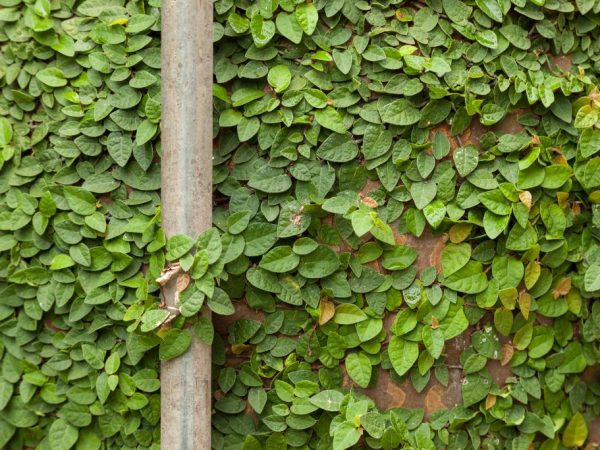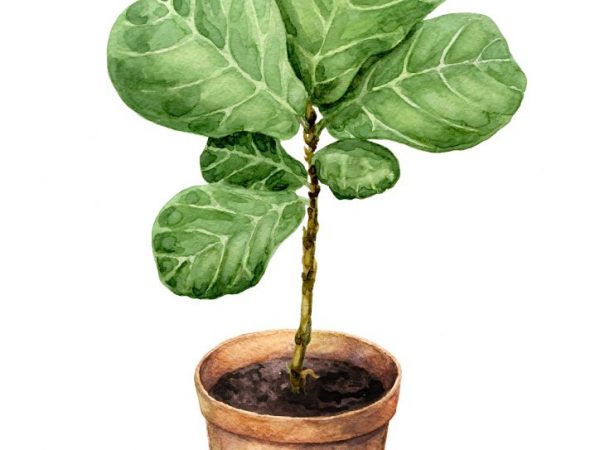Popular varieties of ficuses
A plant such as ficus is known to every lover of indoor flowers. It belongs to the mulberry family and is presented in the form of trees and shrubs. The presence of green or two-colored leaves depends on the variety of ficuses, and each small flower occupies a simplified perianth. Some species of ficuses reach a height of 40 m with a diameter of 5 m. Despite the fact that there are about 1000 varieties, indoor flowers are presented in much smaller quantities.

Popular varieties of ficuses
Ficus varieties make up a fairly long list, each of them has certain characteristics. What are the most common names?
Rubbery ficus
The rubbery ficus is considered the most famous and rather unpretentious plant, and therefore it is often grown at home. It is distinguished by elliptical leaves with pointed ends and a light green crown with straight grooves. Air roots may appear in a humid room.
This ficus is represented by several varieties, differing in color from each other. So, to define the "Black Prince", you need to look at the sheet: if it is black, no questions will arise. Doecheri has pink blotches and a burgundy vein separating the leaf, while Variegat has attractive green leaves with beige edging. The Robusta variety, in addition to its large size, has glossy and bright green leaves.
Ficus Benjamin
Benjamin is a species of ficus, represented by an evergreen tree, reaching a height of 15-25 m.When growing a tree at home, it is really possible to see how it overcomes the 3 m line. in one or two colors, and also be in the shape of an egg, oval and spiral. The tree has a very dense crown, which often covers the trunk - it needs pruning to form it.
Ficus care is not difficult and can be performed by any beginner. Despite the fact that the species does not have large leaves and specific shapes, it needs special attention, otherwise there is the likelihood of an early fall of leaves and Benjamin's baldness.
Being in a natural environment, the plant occupies an area with high humidity, where there is no bright light and dry air, therefore its regular spraying is necessary. To increase the humidity of the apartment, special modern air humidifiers should be used. If baldness cannot be avoided, you should try to find the cause of the problem. This could be:
- a protracted period of culture acclimatization to conditions unusual for it;
- using too cold water for irrigation;
- insufficient lighting;
- being in an uncomfortable temperature;
- the presence of constant drafts and other climatic changes;
- dry air in the apartment;
- too or insufficiently moistened soil.
If one of the factors is present, there is a possibility that the condition of the plant will deteriorate, therefore it must be provided with a bright area, protected from direct sunlight and wind. The leaves should be sprayed and the soil should be watered constantly. Loosening and annual replanting are additional care measures.
Glumosa and creeping ficus
The Glumoz variety, less common in the CIS, has rather bright and oblong-oval green leaves. The height of the tree can reach 20 meters.

Plants need to be looked after
Even the exquisite names are not the fact that young species need an annual transplant, while already matured ficuses are transplanted only once every few years. A transplant is required, because it is important to renew the sour and settled soil. For the procedure, you will need to purchase a neutral / slightly acidic soil for the corresponding crops. Young crops require a special mixture that is prepared using equal amounts of leafy soil, sand and peat. The soil for mature trees should be more dense, for which it is diluted with humus and sod soil.
Creeping ficus
Ficus creeping is represented by a creeping mini-bush. The plant has long stems with extra roots. The green color of the heart-shaped leaf is decorated with yellow mesh patterns. The flower has suction cups, thanks to which it is attached to trees and supports. His way of life can be judged from the title.
When cultivating and transplanting crops, remember the importance of pre-watering. Speaking of the pot, you should give preference to options that exceed the size of the previous container by a few centimeters. The container is covered with drainage, after which the soil is used. As soon as the plant is pulled out of the previous pot, it is fixed in one of the new containers along with a lump of earth. The last stage is to cover it with soil.
Ficus Karika
Carica / fig tree belongs to the types of indoor ficuses. It is small in size and has a spreading crown. The plant has a brownish-grayish trunk with jagged leaves, each of which is decorated with light veins. If you take care of the plant at home correctly, fruiting will not be long in coming.
Despite the inconspicuousness of the flowers, the fruits are similar to spherical infructescence. The best choice for reproduction will be cuttings; to obtain it in the spring, a shoot with several leaves is cut off. The sheet is removed from the bottom, and the crack is washed. Next, the cutting is placed in a container with water or wet sand. The plant is sprayed and covered with any transparent container and left in a warm and shaded place, regularly ventilated. After the roots appear and growth begins, the cutting is planted in a container with the mixture.
Instead of a cutting, some use a large leaf, and cut it off with a heel. Having rolled it into a tube, the sheet should be placed in wet peat or sand. The support installed near the sheet to maintain a stable position is also important. The leaf is regularly sprayed and covered with a flask. During the rooting period, the cutting is ventilated and periodically moistened. Once the roots have formed, you can transplant them into another small container. You need to choose a large pot after a significant outgrowth of the flower.
Ficus Rubiginoza and Pumila White
Rubiginoza varieties are distinguished by their medium volume and red shoot, they have aerial roots. The plant is distinguished by the presence of bright pink pubescent buds. On large leaves, several colors can be found, from dark green to brown. In order for the culture to please with an attractive appearance, it is important to ensure:
- the location of the tree in a free and lighted area;
- protection from direct sun exposure;
- the location of small plants on the windowsill, directed to the west or north; for large plants, choose a floor or a stand near the window;
- spaciousness and freedom: no varieties, especially Rubiginose, can be left in the back of the room in order to prevent slowing growth and shedding of leaves - in spring and summer it is better to place flowers on the balcony, in winter you need to take care of them taking into account additional lighting, because during this period the plants light is sorely lacking.
Ficus Pumila White is a dwarf type liana with elongated and creeping shoots. The shape of the leaves is oval-heart-shaped, although it is asymmetrical. The leaf is rough and wrinkled to the touch, with a mesh pattern. The dwarf plant is like a carpet that grows to the soil with the help of numerous roots.

It is important to regularly water the ficus
It is important to monitor the regularity of watering, which directly depends on the room temperature and humidity in the room. It is necessary to water the culture only when the earthen mixture is completely dried from above.
If plant species such as Pumila White are watered too often, they will rot. Leaving also involves monitoring the lack of excess water in the pan. In particularly dry times, the culture is bathed under a cold shower twice a month, wrapped with a waterproof film. If this is not possible, the varieties are alternately wiped with a damp and dry cloth.
Lyre ficus
The lyre-like plant has large leaves, painted in a light green shade. The shape of young cultures is similar to the silhouette of a violin. The flower can have leaves 60 cm long and 30 cm wide. Every green leaf has white specks and well-defined veins. The length of the tree reaches 12 m. Leaves are taken care of with an appropriate solution, so as not to lose their rich color. It is enough to mix a couple of tablespoons of mayonnaise in water and rub the leaves with this mixture until all excess is removed.
It is important to provide your plants with quality and regular care. Like any other living organism, a flower especially needs fluid and light for proper development.
Variegated ficus
The variegated species of ficuses is distinguished by leaves of various shapes covering the branches. The shrub can only reach a height of 1 m and has a tree-like stem with leathery leaves. Despite their different shape, the leaves are often covered with brown spots. The plant bears fruit in the form of berries, the use of which is strictly prohibited.
The most comfortable temperature for the plant will be from 25 ° C to 30 ° C, and in winter - from 16 ° C to 21 ° C. Domestic species develop faster at room temperature. The only thing that should be fenced off from plants is dry air produced by artificial heating. To do this, variegated ficus is sprayed with cool water a couple of times a day. If the culture is not properly cared for, the tree will easily be negatively affected by pests and infections.
Ficus Melanie
The ficus of the Melanie species is an Indonesian culture characterized by an underdeveloped crown at a young age. The variety has aerial roots, the leaves are colored green.
To feed the species, you need to wait for the onset of summer. At this time, it is necessary to alternate organic matter with mineral fertilizers, making top dressing after 10 days. With the onset of frost, due to the lack of sufficient heat and lighting, you should not resort to fertilizers. To improve the well-being of the variety, you can use the tea leaves buried in the soil.
Summarizing
Caring for ficuses at home is extremely important. Like all indoor species, ficuses need to be provided with good lighting, regular and appropriate watering, and the correct temperature regime. There are also special factors to consider when growing expensive and rare species.
The ficuses listed above, the varieties of which have already been mentioned, are the best home air purifiers.


